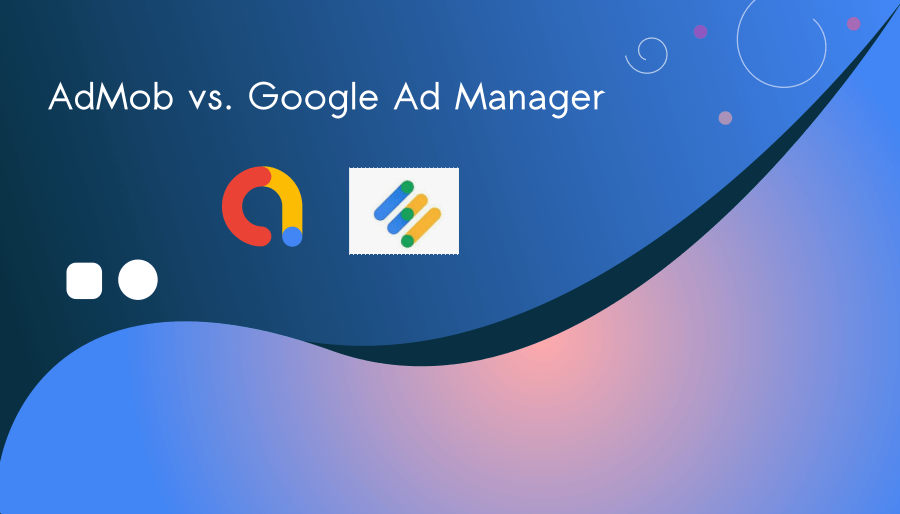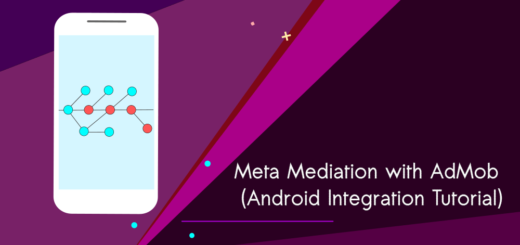AdMob vs Google Ad Manager: Key Differences
If you are a publisher or an app developer looking to monetize your digital assets, you’ve likely come across AdMob and Google Ad Manager. Both are powerful advertising platforms offered by Google, but they serve different purposes and cater to diverse needs. AdMob vs Google Ad Manager ? which one is the right choice?
What is AdMob?
AdMob is a mobile advertising platform designed for app developers who seek to generate revenue through in-app ads. It empowers developers to integrate ads seamlessly into their mobile applications, creating a revenue stream while keeping the user experience intact. AdMob supports a wide variety of ad formats, including banners, interstitials, and app open ads, rewarded video ads, allowing developers to choose the ones that fit their app’s content and user engagement.
Advantages of AdMob

Simple Integration
AdMob offers a straightforward integration process, ensuring that even developers with minimal coding experience can easily incorporate ads into their apps. With a few lines of code, developers can start displaying ads and earn revenue.
Targeted Ads
AdMob leverages Google’s vast user data and sophisticated targeting capabilities to deliver ads that are relevant to each user’s interests, enhancing the likelihood of clicks and conversions.
High Fill Rates
Google’s extensive advertiser network ensures that AdMob delivers high fill rates, maximizing your ad revenue potential.
Real-time Reporting
AdMob provides real-time performance reports, allowing developers to monitor ad performance and make data-driven decisions to optimize their revenue.
What is Google Ad Manager?
Google Ad Manager is an advanced ad serving platform tailored for larger publishers and website owners.
Google Ad Manager enables publishers to sell their ad space programmatically through direct sales, private auctions, and open auctions.
Advantages of Google Ad Manager
Ad Inventory Management
Google Ad Manager allows publishers to efficiently manage their ad inventory, ensuring that the right ads are shown to the right audiences at the right time.
Programmatic Advertising
By leveraging programmatic advertising, publishers can automate the process of buying and selling ad space, resulting in more efficient transactions and increased revenue potential.
Advanced Targeting
Google Ad Manager provides sophisticated targeting options, such as demographics, interests, and contextual relevance, enabling publishers to deliver highly personalized ads to their audience.
AdMob vs. Google Ad Manager: Key Differences
AdMob is primarily targeted at app developers seeking to monetize their mobile applications, while Google Ad Manager caters to larger publishers and website owners looking to manage and optimize their ad inventory.
AdMob focuses on mobile-specific ad formats, such as banners, interstitials, and rewarded video ads. In contrast, Google Ad Manager supports various ad formats across different platforms, including display ads, native ads, and video ads.
AdMob is more suitable for smaller-scale developers who want a simple and easy-to-use ad solution for their mobile apps. Google Ad Manager is designed for medium to large publishers with more significant ad inventory and a need for advanced ad management features.
AdMob primarily employs a cost-per-click (CPC) or cost-per-impression (CPM) model, while Google Ad Manager includes programmatic advertising, which involves real-time bidding and additional revenue-generating opportunities.
Which Platform Should You Choose?
Choosing between AdMob and Google Ad Manager depends on your specific needs and goals.
Choose AdMob if :
- You are a mobile app developer looking for a straightforward ad integration solution.
- You want to monetize your mobile app with minimal effort.
- You prefer a platform with high fill rates and access to a wide range of mobile ad formats.
Choose Google Ad Manager if:
- You are a medium to large publisher with significant ad inventory across various platforms.
- You want advanced ad management capabilities, including programmatic advertising and sophisticated targeting options.
- You seek to optimize revenue through real-time analytics and yield optimization.



